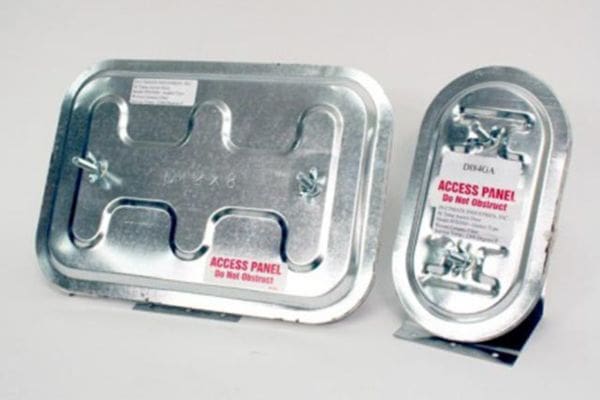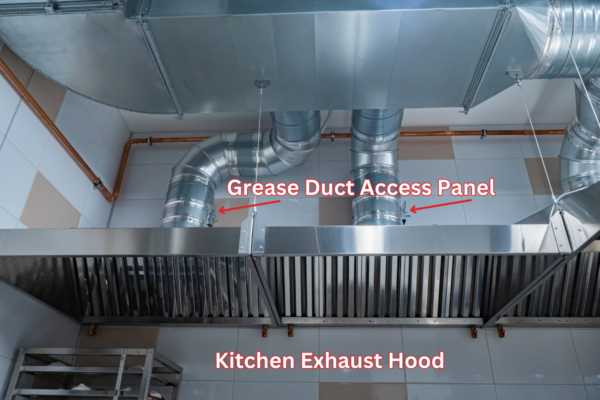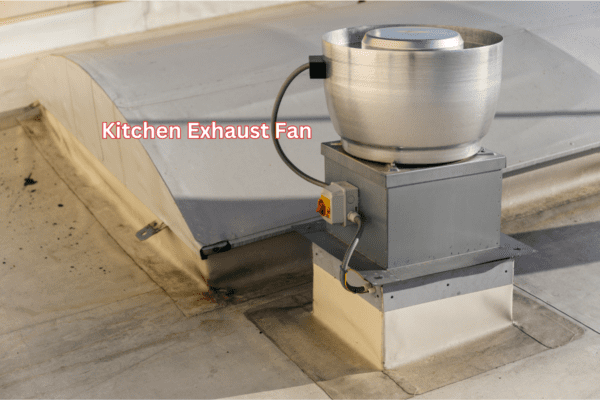Kitchen Exhaust System Access Requirements
Access to the kitchen exhaust system is essential for cleaning and maintenance purposes. Without proper access, it can be difficult to reach and clean all components of the system thoroughly. Access panels are necessary to ensure that the ductwork is easily accessible and cleanable, preventing the buildup of grease and reducing the risk of fire hazards.

Grease Duct Access Panel Installation
Access to kitchen exhaust ductwork is crucial for proper cleaning and maintenance, as required by codes like NFPA 96. While it's ideal for the ductwork to run straight from the hood to the fan, many systems are more complex.
Averus West can provide access to every turn of the duct, as well as long runs of horizontal and some vertical. The company installs only UL-listed access panels, ensuring suitable access for proper and thorough cleaning without causing any damage to the system.

Kitchen Exhaust Fan Hinge Installation
As per the standards set by the NFPA 96, proper cleaning and maintenance of a commercial kitchen exhaust system is vital for the safety of the building and its occupants.
Averus West, a professional cleaning and maintenance service provider, offers hinge kits that can be installed on the base of the exhaust fan to facilitate safe and easy cleaning without causing any damage to the fan, conduit, or roofing system. Additionally, fan access doors can also be installed to clean the top of the fan blades and ensure a longer lifespan for the exhaust fan.
Get a Quote
Serving Arizona, Utah, Texas, Oklahoma, New Mexico, California, Nevada, Idaho, Montana, Oregon, and Washington
Kitchen Exhaust System
A kitchen exhaust system is an essential component of any commercial kitchen as it helps to remove smoke, steam, and cooking fumes from the cooking area. The system comprises several components, including the kitchen exhaust hood, grease filters, grease ducts, grease duct access panels, and the kitchen exhaust fan. Here we will explore each of these components in detail and how they work together to keep a commercial kitchen fire-safe and clean.

The kitchen exhaust hood is the first component of the system, and it is located above the cooking equipment. The hood works by capturing the smoke and fumes generated during cooking and directing them towards the grease filters. The grease filters are designed to trap grease particles, preventing them from entering the ductwork and causing a fire hazard.
The next component of the system is the grease ducts. These are metal pipes that transport the smoke, steam, and cooking fumes from the hood to the outside of the building. The ducts are usually insulated to prevent heat transfer and maintain a safe working environment.
The grease duct access panel is an important component of the system, as it allows for easy access to the ductwork for cleaning and maintenance purposes. It is essential to keep the grease ducts clean, as a buildup of grease can lead to a fire hazard.
Why Choose Averus?
Comprehensive On-Site Evaluation Provided
- Comprehensive quotes for kitchen exhaust and fire prevention
- Detailed system review with picture documentation
- NFPA-based recommendation for exhaust system cleaning cycle
- Identification of situations that may require corrective action
- A detailed service program customized to fit your specific needs
Count on The Red Carpet Treatment
- Professional, courteous and efficient customer service associates
- Flexible scheduling process to meet your specific needs
- Predetermined service appointments available
- Averus West teams are available 24/7 for emergency response
Actions Speak Louder Than Words
The Averus West recipe for success combines three key ingredients: state of the art cleaning equipment, chemicals and proven techniques. This ensures that your entire system is thoroughly cleaned top to bottom:
- Exhaust Hood Plenum
- Accessible Horizontal and Vertical Ductwork
- Grease Exhaust Fans
The final component of the system is the kitchen exhaust fan. The fan is responsible for drawing the smoke and fumes through the hood and grease filters and pushing them through the ductwork to the outside of the building. The fan is usually mounted on the roof or wall of the building and is designed to operate at high speeds to ensure efficient removal of smoke and fumes.
In conclusion, a commercial kitchen exhaust system is a critical component of any commercial kitchen. The system works by capturing smoke and fumes generated during cooking and directing them through the hood, grease filters, ducts, access panels, and exhaust fan, before being released to the outside of the building. It is important to ensure that all components of the system are regularly cleaned and maintained to prevent fire hazards and maintain a safe working environment.

NFPA Standards and Guidelines For Cleaning
NFPA 96 is a standard established by the National Fire Protection Association (NFPA) that outlines the minimum requirements for the design, installation, operation, inspection, and maintenance of commercial kitchen exhaust systems. The standard also provides guidelines for the cleaning of kitchen exhaust systems to ensure that they operate safely and efficiently. According to the NFPA 96 standards, all components of a kitchen exhaust system must be cleaned regularly to prevent the buildup of grease, which can cause fire hazards. The frequency of cleaning depends on the type and volume of cooking, but all systems must be inspected and cleaned by a qualified professional at least once a year.
Ready to Get Started?
Contact us today to get a quote for commercial kitchen hood cleaning!
